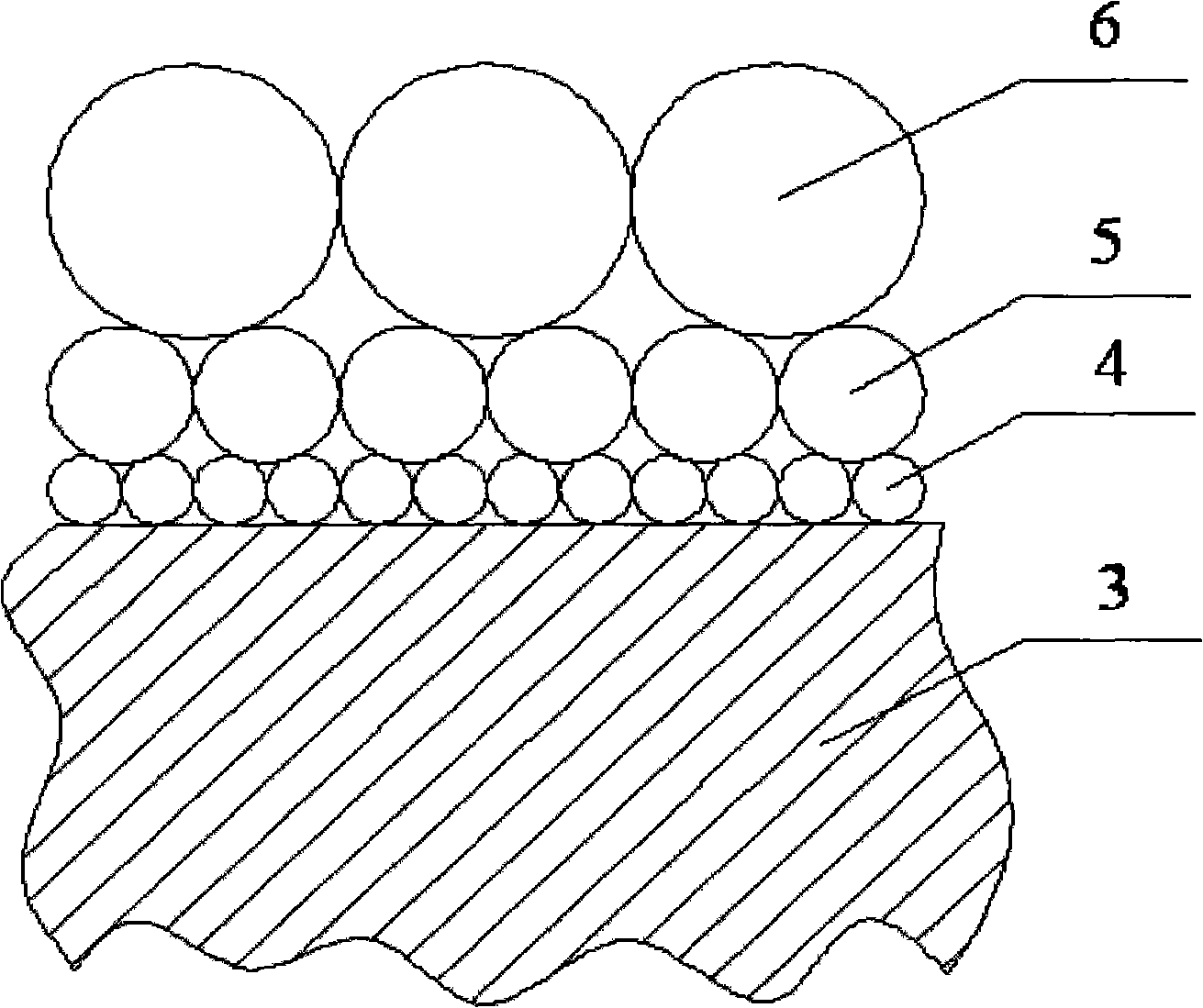Partial gradient pore space structure artificial arthrosis prosthesis and method of preparing the same
A pore structure and artificial joint technology, applied in prostheses, joint implants, joint implants, etc., can solve problems such as mechanical properties of damaged prostheses
- Summary
- Abstract
- Description
- Claims
- Application Information
AI Technical Summary
Problems solved by technology
Method used
Image
Examples
Embodiment 1
[0037] First, spread the spherical titanium powder with a diameter of 100 μm on a titanium plate with a length of 30 mm, a width of 20 mm, and a thickness of 3 mm, and spread 3 layers, and then spread 3 layers of spherical titanium powder with a diameter of 200 μm, and finally spread a layer of titanium powder with a diameter of 300μm spherical titanium powder; put the above-mentioned titanium plate covered with spherical titanium powder into a vacuum sintering furnace for high-temperature sintering. The vacuum degree of the sintering furnace is 1×10 -3 Pa, the furnace temperature is room temperature, the furnace temperature is raised to 1200°C, and the temperature rise rate is 5°C / min. During the sintering process, a pressure of 5 MPa is applied to the titanium plate covered with spherical powder, and the heat preservation and pressure are kept for 2 hours. After that, the furnace Cool the furnace to room temperature to obtain a titanium plate with a gradient pore structure on...
Embodiment 2
[0039] First, spread the spherical titanium powder with a diameter of 200 μm on a titanium plate with a length of 50 mm, a width of 40 mm, and a thickness of 5 mm, and spread one layer, and then spread another layer of spherical titanium powder with a diameter of 300 μm, and finally spread a layer of titanium powder with a diameter of 500μm spherical titanium powder; put the above-mentioned titanium plate covered with spherical titanium powder into a vacuum sintering furnace for high-temperature sintering. The vacuum degree of the sintering furnace is 1×10 -3 Pa, the furnace temperature is room temperature, the furnace temperature is raised to 1400°C, and the heating rate is 10°C / min. During the sintering process, a pressure of 2 MPa is applied to the titanium plate covered with spherical powder, and the heat preservation and pressure are maintained for 1h. After that, the furnace Cool the furnace to room temperature to obtain a titanium plate with a gradient pore structure on ...
Embodiment 3
[0041]First, spread the spherical titanium powder with a diameter of 150 μm on a titanium plate with a length of 40 mm, a width of 30 mm, and a thickness of 4 mm, and spread 2 layers, then spread 2 layers of spherical titanium powder with a diameter of 250 μm, and finally spread a layer of titanium powder with a diameter of 400μm spherical titanium powder; put the above-mentioned titanium plate covered with spherical titanium powder into a vacuum sintering furnace for high-temperature sintering. The vacuum degree of the sintering furnace is 1×10 -3 Pa, the furnace temperature is room temperature, the furnace temperature is raised to 1300°C, and the heating rate is 7.5°C / min. During the sintering process, a pressure of 1.5MPa is applied to the titanium plate covered with spherical powder. Cool the furnace to room temperature to obtain a titanium plate with a surface gradient pore structure; use laser welding technology to weld the above-mentioned titanium plate with a surface gr...
PUM
 Login to View More
Login to View More Abstract
Description
Claims
Application Information
 Login to View More
Login to View More - R&D
- Intellectual Property
- Life Sciences
- Materials
- Tech Scout
- Unparalleled Data Quality
- Higher Quality Content
- 60% Fewer Hallucinations
Browse by: Latest US Patents, China's latest patents, Technical Efficacy Thesaurus, Application Domain, Technology Topic, Popular Technical Reports.
© 2025 PatSnap. All rights reserved.Legal|Privacy policy|Modern Slavery Act Transparency Statement|Sitemap|About US| Contact US: help@patsnap.com


